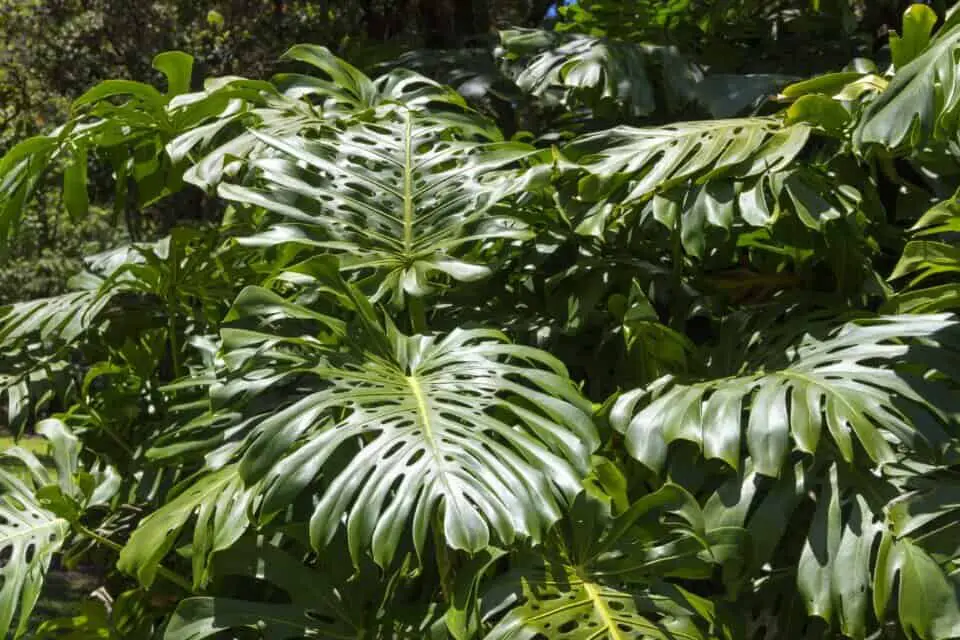Some links in the post are affiliate links and I get a commission from purchases made through some links found in the post.
When people start keeping houseplants, their interest often revolves around philodendrons and pothos.
After all, caring for these varieties comes easy – even if you have no gardening experience, you can figure out how to keep these plants alive.
People say cacti are easy to care for, but both the pothos and the philodendron also come close. That’s because they quickly adapt to indoor conditions despite being wild plants.
If you can maintain your average temperature and humidity levels, the plants will not start showing signs of distress.
Moreover, they are easy on the eyes, and everyone wants a plant that adds to the allure of the space. And they are available in a wide range of varieties, making it easy to find a plant that matches your décor.
With so many good factors tied to each plant, it is not surprising that most people have no idea which plant they should choose. Plus, some people find it hard to tell the two apart.
This guide gets into what makes these species similar and different. And it also covers how you can tell the two apart.
Pothos vs Philodendron – What are the Similarities?
Okay, these plants have quite a lot in common. To start with, they are favorites among beginner and experienced gardeners alike. But there is so much more that correlates these plants:
1) They Are Both Toxic to Dogs and Cats
 I will start with one crucial point that plant parents should be aware of – if you have a pet in your home, growing any of these species can prove a tad challenging.
I will start with one crucial point that plant parents should be aware of – if you have a pet in your home, growing any of these species can prove a tad challenging.
That’s because they contain compounds that, when ingested by pets, can cause poisoning. There have been numerous cases of cats and dogs being rushed to the vet after they ingested these species.
But does this mean you should not grow these beautiful houseplants? Not at all. Instead, it only points to the need for safety. How so?
- Keep the plants out of reach of the pets. If possible, you should locate the plants in rooms that pets cannot access. If this is not practical, consider mounting the plants or using hanging baskets. And because cats can jump at the plants, you might need to start spraying your cat with water when it attempts to do this.
- Give your cat something else to nibble on – You can use cat nip or any other suitable plant. Your cat will not be too preoccupied with the philodendron or the pothos if it has a plant it can consume.
Also, remember to practice caution and watch out for any signs of poisoning. These include drooling, pawing at the mouth, and gastrointestinal issues.
Do not wait until your cat or dog suffers difficulty. When you suspect your pet may have consumed the plant, you should call your vet and rush your pet to an emergency center. The sooner you get it help, the easier the recovery will be.
2) They Both Thrive in Bright Light
Light is essential to the healthy growth of houseplants. They use the photons (energy) in the light to convert water and nutrients into food, giving the plant energy to grow.
And regarding these species, access to enough light is paramount to their growth. They both enjoy being in bright light, and you can get the most out of them by placing them:
- In bright and direct light, aka full sun: If you live in a cool climate, you can place the plant by a south-facing window where it can get full sun exposure. But if you notice signs of burning, you can move the plant away from the window, especially in the summer when the heat is intense,
- In bright and indirect light: This type of light mimics what these species get in the wild and goes by dappled light or filtered light. You can achieve this exposure by leaving the plant near an east-facing window.
It is best to avoid west-facing windows as these usually let in the direct afternoon sun, which can be too much for the plant.
3) They are Both Sensitive to Waterlogging
Both the pothos and the philodendron prefer being in moist, well-draining soil. When you leave them in wet soil for too long, the water takes up the air spaces, creating an environment where fungi can thrive.
And in no time, the fungi start attacking the roots of the plants, ridding them of the ability to absorb water and nutrients.
Root rot develops fast and can kill a plant even before you have had the chance to notice its effects, such as yellowing and drooping.
You can avoid suffocating these plants by:
- Only watering them when the top inches of the soil feel dry: An easy way to ensure the soil needs water is to dig two inches below the surface. Then use your finger to feel the earth. If it feels moist or wet, give it a few more days before checking again. Some people have a hard time telling if the soil is wet. And if you can resonate with this, getting a moisture meter is a good idea. You can use it on other plants too and avoid waterlogging overall,
- Using pots with enough drainage holes and ensuring the holes are not blocked: You can also invest in high porosity pots, which can wick away the extra moisture, and
- Using a potting soil with a moderate drainage rate: You should not use a compact potting mix or one with too many fine ingredients. Instead, you should ensure the mix has adequate drainage, moderate water retention, and moderate texture. If you think your mix holds on to too much water, you can amend it by adding sand and other coarse materials.
Also, remember to change your watering schedule as the months get colder. The plants do not need as much moisture in these seasons, and the excess will suffocate their roots.
4) They Both Enjoy High Humidity
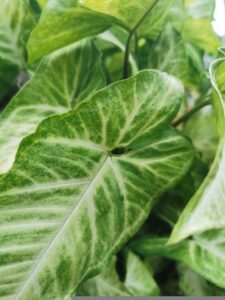 Humidity is the measure of water vapor in the air. And in tropical regions, the humidity is often high, ranging above 60% in most cases.
Humidity is the measure of water vapor in the air. And in tropical regions, the humidity is often high, ranging above 60% in most cases.
These species come from areas with such high humidity, so they prefer being housed in similar conditions.
The more humid the house is, the less water they lose via transpiration and evaporation, and the better their turgor pressure. Moreover, these plants look healthy in such conditions.
So, how high should the humidity be? Generally, you should be safe with a range of about 60% to 80%. But the plants can also survive moderate humidity, around 40% to 60%.
You can use a hygrometer to gauge just how humid your home is, and if it falls short, you can amend it by:
- Using a humidifier in the home,
- Leaving a bowl of water near the plant,
- Leaving the plant in the bathroom, and
- Opening the kitchen and bathroom doors allows humid air to move to other rooms.
While these plants enjoy high humidity, they can still do well in low humidity. They will not be as perky as in higher ranges, but they will not dry.
So, even if the air in your home feels dry, you do not need to buy a humidifier just yet.
5) They Do Not Like Drafts
People often place houseplants near windows or doors for aesthetic appeal. And while this may look good and enhance the natural vibe of the home, it can hurt these species.
They prefer being kept in cool temperatures away from sudden drafts. If you leave them near sources of winds or other drafts, the leaves suffer damage to their barrier.
And they start yellowing or browning, affecting their ability to make food – and hurting their aesthetic.
You should thus place these plants far from the windows and doors you often use. And keep them away from air conditioning and heating vents.
It is imperative to do this in summer and winter when the need for cooling and heating vents increases.
6) They Are Not Frost Tolerant
The pothos and philodendrons are native to tropical regions and do well in the higher USDA zones. Thus, it is no surprise that they do not take too well to frost exposure. As such, you should:
- Bring them indoors before winter begins,
- Ensure that they do not touch windows or other cold surfaces,
- Tweak the temperature in the home to keep the room warm, and
- Avoid placing the plants near windows or doors where they can suffer cold exposure.
You can also leave them in rooms you often use as the temperatures in these spaces will not be extreme. For example, your living room should be good enough for these plants in all seasons.
7) You Can Grow Them from Cuttings
Given that these species are vining plants, you can use cuttings to propagate more plants. And this makes it easy to grow more of these plants in your home or even share them with loved ones.
All you need is to use a cutting that has at least one node, and you can start the rooting process. Pruning these vining plants does not set them back because they have vigorous growth.
So, you can keep cutting them back and growing more vines to increase your population.
8) They Are Not Heavy Feeders
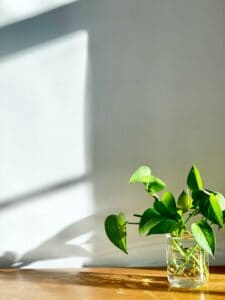 You will not need to feed these plants much. They only require feeding once a month during the growing season using a balanced feed.
You will not need to feed these plants much. They only require feeding once a month during the growing season using a balanced feed.
Ideally, you should use one with ratios 10-10-10 or 20-20-20 with a slow-release formula. You are better off underfeeding them than overfeeding them, as the latter can result in fertilizer burn. Also, you should:
- Avoid using a feed that focuses on one nutrient unless the plant needs that specific nutrient, and
- Feeding the plant in the cold months because the nutrients will only go to waste and can damage the plant’s roots.
Feed the plant when watering it, so it has enough time to absorb the nutrients.
To top this list off, they are both low-maintenance plants. Growing these plants is easy, even for people who do not have much experience with gardening.
All you need is to ensure they are in bright light, have enough water, and are regularly fed. It might take a while to get the hang of things but killing these plants is often quite challenging – you need to try to get it right!
Pothos vs Philodendron – What are the Differences?
Often, people find it hard to tell the pothos apart from the philodendron. And as I have covered, you can see they have many similarities.
However, if you are intent on uncovering what makes them apples and oranges, this is what you need to know:
1) They Belong to a Different Genera
I will take you back to biology class just for a few seconds. Do you remember botanical nomenclatures and how a slight difference in families, divisions, species, et cetera, would affect just how much plants related to each other?
The same understanding holds when it comes to these species. While they belong to the same plant family (Araceae), they belong to different genera.
The pothos, also known as the silver vine, money plant, or devil’s ivy, belongs to the Epipremnum genus. But the philodendron comes from the Philodendron genus.
And this difference explains the rest of the differences I will cover. It also explains why the growing conditions of the two plants are largely similar and why they have such similar appearances.
2) They Have Different Leaf Shapes, Textures, and Growth Habits
Have you ever wondered why the philodendron is also known as the heartleaf philodendron? It comes down to the shape of the leaf, which, as the name suggests, usually looks like a heart.
But if you go by this differentiation alone, you can mistake the philodendron for the pothos. That is because the pothos, too, can have a heart-shaped leaf shape. So, it would help if you looked deeper into the leaves.
How?
- A philodendron leaf tends to lie flat on its surface, opening up more to the outside. But if you look at a pothos leaf, the leaf seems to fold up in the middle.
- Philodendron leaves are much smoother than pothos, which tend to have more texture. Additionally, pothos leaves are much thicker while philodendron leaves are much thinner.
- The new leaves produced by both species are also quite different. When philodendron leaves first appear, they feature a protective wrap that appears like a sheath. It remains on the leaves until they mature, then falls off and dries up. But pothos leaves do not. Instead, they emerge furled before unfurling to reveal a leaf that appears folded in the middle.
- Pothos leaves have a much more defined ridge that runs down their center, while philodendron leaves do not. It plays a significant role in why the leaves fold in the middle. The lack of such a grove in the philodendron leaves allows them to take on a relaxed look.
- Philodendron leaves have much longer tips than pothos leaves, with shorter tips with a much less pronounced end. The philodendron leaf takes on a much heartier shape than the pothos.
- The color of the leaves is different from the new leaves of the philodendron. When the leaves first appear, hidden behind the sheath, they feature a brown or pinkish tint. However, this can change based on the variety of philodendrons you have in your home. Some may even have reddish or orange hues. As the leaves mature and emerge from the sheath, they take on the colors of the older leaves. But in pothos, this color change does not arise. When the leaves are new, they may have a slightly noticeable hue difference from the older ones. But this is not as contrasting as what you would see in philodendron leaves.
Discerning the above differences is not easy unless you have the two plants and can lay them side by side. If this is not the case, you can pay particular attention to the petioles, i.e., where the base of the leaf connects to the stem or the leaf stalk.
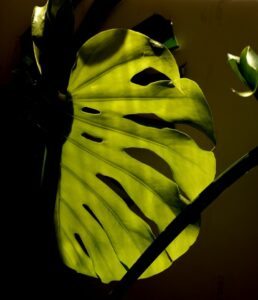
When you observe the pothos, you realize it has a straight base. And this affects the overall shape of the leaf because it does not take on a very defined heart shape.
But when you look at that of the philodendron, you see that it curves towards the leaf such that the leaf takes on a heart shape. This curving, coupled with the long and pointed tip, earns it the heart-shaped philodendron title.
Moreover, the texture and shape of the petioles differ. That of the philodendron is smooth and features a color lighter than that of the leaves.
It also takes on a much thinner breadth compared to that of the pothos, thus emphasizing the shape and the width of the leaf.
The petiole in the pothos does not have a much different color than the leaf. And where such variation is present, the difference is minimal, such that it does not create emphasis.
3) Their Aerial Roots Differ
Pothos and philodendrons are vining plants that depend on their aerial roots for survival.
They use these roots to twine around other plants in the wild, thus reaching the sun to make food and reaching further so they can establish across vast distances.
They also provide structure to the plants, making them lovely houseplants as you can train them along walls and other surfaces using these roots.
So, what about these roots makes these vining plants different? Let’s start with the pothos. On each node, you will find only one aerial root.
But when you look at the philodendron, more than one aerial root emanates from each node. As such, the plant boasts clusters of roots at each section, giving off a bushy look.
Additionally, the aerial roots on pothos are large, but those on philodendrons are much smaller and appear wild.
4) Their Care Habits Differ
I earlier covered that these plants need the same growing conditions to thrive for the most part. And while they may both be low-maintenance plants, they have some key differences in how they like being grown.
1) The philodendron has much better light adaptability: While both these species enjoy being in bright light, the philodendron is much needier regarding light exposure. It can thus grow even in low to medium light exposure without suffering adverse effects. But if you leave a pothos in such light, it starts showing signs of yellowing and stunted growth. Thus, if you cannot get enough light in your home and do not want to supplement with artificial lighting, you should lean towards the philodendron.
2) Pothos prefer higher temperatures: Both species do well in temperatures between 65- and 85 degrees Fahrenheit. But as you go higher than this, the pothos shows much more resilience than the philodendron. Thus, you are better off growing the pothos if you live in a hot area as it will withstand the high ranges. If you leave the philodendron exposed to such heat, it will droop and can even start dropping its leaves because of heat stress.
3) Pothos can tolerate underwatering more than philodendrons. Both species like being in moist soil. And when you leave them without water for a long time, they cannot keep up with water loss from plant processes. They then try to reduce the water loss rate by drooping and reducing cellular function. And this helps them ride the wave of neglect. Pothos are much better equipped to handle such water loss. But philodendrons cannot keep up for long, given their low tolerance to high heat. And they are thus more likely to suffer the adverse effects when neglected for too long. If you often underwater your plants, you should keep an eye on your philodendron or go with the sturdier pothos.
These differences aside, these plants have quite a lot that makes them similar!
Final Thoughts
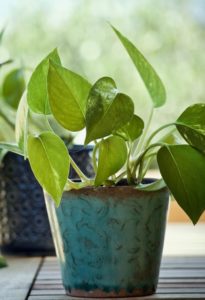 If you must choose between the philodendron and the pothos, the decision cannot come easily.
If you must choose between the philodendron and the pothos, the decision cannot come easily.
I would advise you to go with your preference based on needs and unique features.
And if this proves hard, you can always grow both – why choose when you can have them all?
Happy Gardening!

